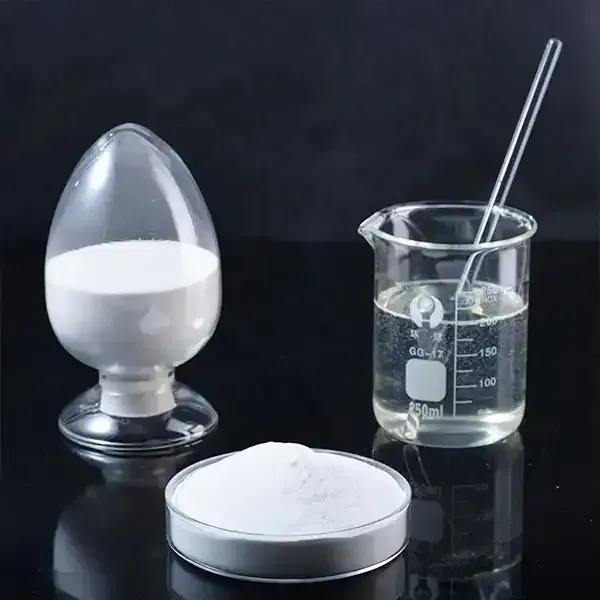Understanding Cellulose Ethers Structure, Types, and Applications
Cellulose ethers are a group of chemical compounds derived from cellulose, an abundant natural polymer that forms the structural component of plant cell walls. By chemically modifying cellulose, a wide array of cellulose ethers can be produced, each with distinct properties and applications. This article explores the structure, types, and diverse applications of cellulose ethers in various industries.
Structure of Cellulose Ethers
Cellulose is a linear polymer composed of repeating units of glucose, linked by β(1→4) glycosidic bonds. The hydroxyl groups (-OH) present on the anhydroglucose units make cellulose reactive, allowing for modification through etherification processes. In cellulose ethers, one or more of these hydroxyl groups are replaced with ether groups (-O-), converting the hydrophilic nature of cellulose into products that have varied solubility and functional properties.
The degree of substitution (DS)—the average number of hydroxyl groups substituted per repeat unit—is a critical factor that influences the properties of cellulose ethers. Higher DS values often lead to increased solubility in organic solvents, altered viscosity, and enhanced film-forming capabilities.
Types of Cellulose Ethers
Several types of cellulose ethers exist, each with unique characteristics and uses
1. Methyl Cellulose (MC) Methyl cellulose is produced by the methylation of cellulose. It is non-ionic, soluble in hot water, and forms gels upon cooling. Its ability to create a viscous solution makes it useful in food products, pharmaceuticals, and construction materials.
2. Hydroxypropyl Methyl Cellulose (HPMC) This derivative combines both hydroxypropyl and methyl groups. HPMC boasts excellent adhesion properties, making it suitable for use in adhesives and coatings. Additionally, it is employed as a thickening agent and in controlled-release formulations in pharmaceuticals.
3. Carboxymethyl Cellulose (CMC) CMC is created by carboxymethylating cellulose. This anionic ether is highly soluble in water and exhibits viscosity-increasing properties. CMC is widely used in the food industry as a thickener and stabilizer, as well as in pharmaceuticals and cosmetics due to its emulsifying properties.
4. Ethyl Cellulose (EC) Ethyl cellulose is produced by replacing some hydroxyl groups with ethyl groups. It has limited solubility in water but is soluble in organic solvents. EC is used in film coatings, controlled-release drug formulations, and as a binder in various applications.
cellulose ethers

5. Hydroxyethyl Cellulose (HEC) This ether is known for its water-retention ability and thickening properties. HEC is typically utilized in personal care products, paints, and construction materials.
Applications of Cellulose Ethers
Cellulose ethers have a broad range of applications across various industries due to their versatile properties
- Food Industry In food processing, cellulose ethers serve as thickening agents, stabilizers, and emulsifiers. Products such as ice cream, salad dressings, and sauces benefit from the improved texture and viscosity provided by these compounds.
- Pharmaceuticals Cellulose ethers are crucial in the formulation of tablets and capsules, where they act as binders, diluents, and controlled-release agents. Their biocompatibility and favorable drug-release profiles make them ideal for pharmaceutical applications.
- Construction In construction, cellulose ethers enhance the workability and performance of cement and plaster formulations. They help improve water retention, extend the open time, and increase adhesion between surfaces.
- Cosmetics and Personal Care The thickening and film-forming properties of cellulose ethers make them essential in cosmetics, lotions, and shampoos. They improve texture and provide stability to emulsified products.
- Industrial Applications Cellulose ethers are also utilized in various industrial applications, such as paints, coatings, and textiles, where they act as rheology modifiers, improving the application and performance characteristics.
Conclusion
Cellulose ethers represent a significant class of compounds with diverse properties and applications in many industries. Their ability to modify the physical and chemical attributes of substances makes them invaluable in food, pharmaceuticals, cosmetics, construction, and beyond. As research continues to unfold, more innovative uses of cellulose ethers are likely to emerge, further emphasizing their importance in modern technology and daily life.
-
The Application and Significance of Construction RdpNewsMay.19,2025
-
Industrial Grade HpmcNewsMay.19,2025
-
Building Coating Adhesive Building Coating Adhesive HpmcNewsMay.19,2025
-
Application Of Hpmc For Detergent For Detergent In DetergentsNewsMay.19,2025
-
Application Of Hpmc Cellulose In Cement-Based MaterialsNewsMay.19,2025
-
Application Of High Quality Hpmc For Construction In The Field Of ConstructionNewsMay.19,2025




